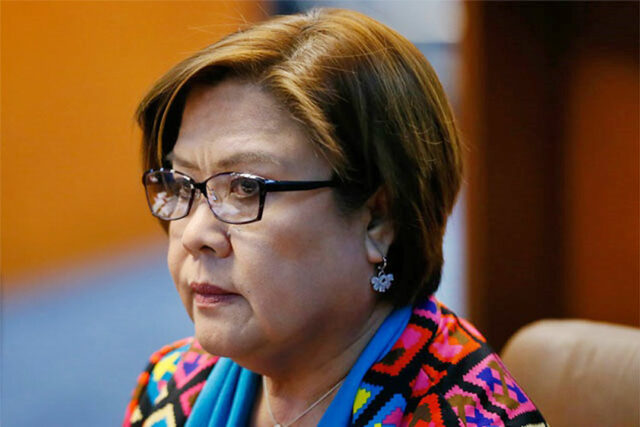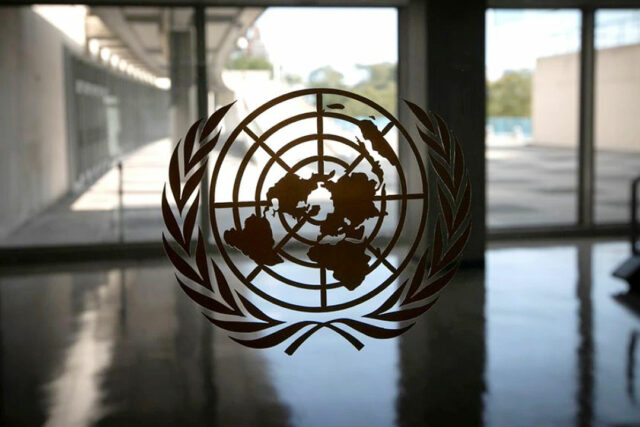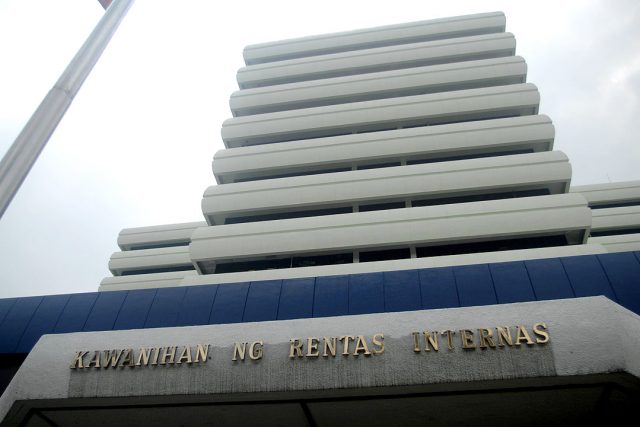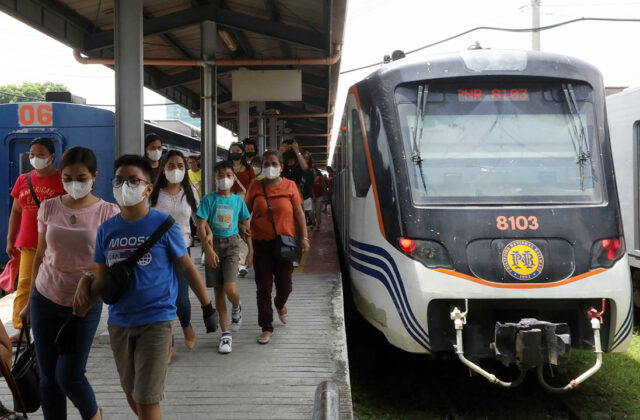Manila debuts at 74th out of 94 financial centers in Global Green Finance Index
Manila made its debut in the 12th edition of the Global Green Finance Index (GGFI) by Long Finance, ranking 74th out of 94 financial centers. However, with an overall rating of 536, the Philippine capital lags compared with its peers in the region. The index measures perceptions of the quality and depth of green financial products across the world’s financial centers and charts the progress of financial centers towards a financial system that delivers sustainable development and values people and the planet as much as profit.
Shares up on positive sentiment, foreign buying
PHILIPPINE SHARES climbed on Wednesday amid an improved economic outlook and strong foreign buying.
The benchmark Philippine Stock Exchange index rose by 44.35 points or 0.71% to 6,253.18, while the broader all shares index increased by 15.44 points or 0.46% to 3,330.04.
“The local bourse gained by 44.35 points (0.71%) to 6,253.18, thanks to strong foreign buying, recording a net inflow of P1.02 billion. Moreover, Oxford Economics’ upward adjustment of the Philippines’ economic growth forecast from 4.5% to 5% helped lift the market,” Philstocks Financial, Inc. Research Analyst Claire T. Alviar said in a Viber message.
Oxford Economics recently said that it expects Philippine gross domestic product (GDP) to grow by 5% this year, faster than its previous projection of 4.5%.
Philippine GDP expanded 5.9% in the third quarter, faster than 4.3% in the second quarter but slower than 7.7% a year earlier.
For the first nine months, economic growth averaged 5.5%, still below the government’s 6-7% full-year target.
Meanwhile, net foreign buying ballooned to P1.02 billion on Wednesday from P120.35 million on Tuesday.
“The local bourse has maintained its upward trajectory, still propelled by the recent positive developments in macroeconomic factors, including easing inflation in both the US and the Philippines, along with favorable third quarter earnings results,” Unicapital Securities, Inc. Senior Equity Research Analyst Carlos Angelo O. Temporal said in a Viber message.
Philippine headline inflation fell to a three-month low of 4.9% in October from 6.1% in September. For the 10-month period, inflation averaged 6.4%.
Meanwhile, the US consumer price index (CPI) was unchanged in October for the first time in more than a year following a 0.4% rise in September. On an annual basis, the CPI rose by 3.2% after going up by 3.7% in September.
All sectoral indices ended higher on Wednesday. Mining and oil surged by 180.65 points or 1.91% to 9,626.98; industrials went up by 152.29 points or 1.73% to 8,913.03; services climbed by 14.17 points or 0.94% to 1,521.59; holding firms rose by 27.88 points or 0.46% to 5,967.62; property improved by 6.80 points or 0.25% to end at 2,647.36; and financials increased by 0.34 point or 0.01% to 1,751.76.
“Within the index members, consumer foods’ stocks Universal Robina Corp. and Monde Nissin Corp. were at the top, gaining by 5.36% and 4.73%, respectively. However, Metropolitan Bank and Trust Co. had the biggest loss, dropping by 1.52%,” Ms. Alviar said.
Value turnover reached P4.01 billion on Wednesday with 296.08 million issues switching hands, higher than the P3.91 billion with 422.56 million shares recorded the previous trading day.
Advancers beat decliners, 93 versus 77, while 48 issues closed unchanged. — RMDO
Peso drops vs dollar
THE PESO declined against the dollar on Wednesday amid expectations that the world’s biggest oil exporters will continue to keep production low.
The local unit closed at P55.45 per dollar on Wednesday, weakening by six centavos from its P55.39 finish on Tuesday, based on Bankers Association of the Philippines data.
The peso opened Wednesday’s session weaker at P55.50 against the dollar. Its intraday best was at P55.44, while its worst showing was at P55.62 versus the greenback.
Dollars exchanged went down to $1.21 billion on Wednesday from $1.6 billion on Tuesday.
The peso depreciated against the dollar on Wednesday due to higher global crude oil prices recently despite a four-day ceasefire agreement between Israel and Hamas, Rizal Commercial Banking Corp. Chief Economist Michael L. Ricafort said in a Viber message.
“The peso weakened as global crude prices moved higher amid views that OPEC+ (Organization of the Petroleum Exporting Countries and their allies including Russia) will remain committed to its cut in production quotas,” a trader said in an e-mail.
Crude prices pared earlier losses to settle nearly flat as investors looked ahead to Sunday’s scheduled OPEC+ meeting, Reuters reported.
US crude dipped by 0.08% to settle at $77.77 per barrel, while Brent settled at $82.45 per barrel, up by 0.16% on the day.
The peso declined amid dovish signals from the US Federal Reserve after the release of the minutes of its last meeting, Mr. Ricafort said.
Fed officials agreed at their last policy meeting that they would proceed “carefully” and only raise interest rates if progress in controlling inflation faltered, the minutes of the Oct. 31-Nov. 1 gathering showed on Tuesday, Reuters reported.
The US central bank kept its benchmark interest rate steady at the 5.25%-5.5% range for a second straight time during this month’s meeting. It has hiked rates by 525 basis points since it began its tightening cycle in March 2022.
The Federal Open Market Committee will next meet on Dec. 12-13 to review policy.
For Thursday, the trader said the peso could depreciate further amid expectations of strong US jobs data. The trader expects the peso to move between P55.35 and P55.60 per dollar, while Mr. Ricafort sees it ranging from P55.35 to P55.55. — AMCS with Reuters
DFA: 17 Pinoy seamen among 25 crew taken hostage by Houthis in Red Sea
By John Victor D. Ordoñez, Reporter
SEVENTEEN Filipino seamen were among the 25 crew members who were taken hostage after Yemen’s Houthi rebels seized an Israeli-linked cargo ship in the Red Sea, the Philippine Department of Foreign Affairs (DFA) said on Wednesday.
“We have been making diplomatic representations with governments,” Foreign Affairs Undersecretary Jose Eduardo A. de Vega told reporters in a Viber message. “DFA is working with DMW (Department of Migrant Workers), which has primary jurisdiction over assistance cases involving seafarers.”
On Tuesday, Yemen’s Al-Masirah TV, which is operated by the Iran-backed Houthis group, released a video showing Houthi forces descending from a helicopter and seizing the Japanese Nippon Yusen K.K cargo ship in the southern part of the Red Sea on Nov. 20.
The Houthis described the ship as Israeli, Reuters reported on Nov. 20. The group also seized a British-owned cargo ship that had been sailing through the southern Red Sea.
“This is not the first time Filipino seafarers were held hostage,” Mr. De Vega told GMA News. “This is connected to the war between Hamas and Israel. The ship was targeted because it was allegedly Israeli-owned, although the operator was a Japanese company.”
He said President Ferdinand R. Marcos, Jr. has ordered DFA to ensure the safety of the Filipino seamen.
Mr. De Vega said DFA and other Cabinet officials were set to meet on Wednesday to discuss the situation.
The United States might designate the group as a terrorist organization after the incident, US National Security Council spokesman John Kirby said in a statement on Tuesday.
US President Joseph R. Biden delisted the group as a “foreign terrorist organization” and “specially designated global terrorists” in 2021, over fears of worsening Yemen’s humanitarian crisis.
Yemen has the world’s worst humanitarian crisis, with 21.6 million of the population being dependent on aid, according to the United Nations.
Former US President Donald J. Trump had blacklisted the Houthis as a terrorist organization, which led to humanitarian groups worrying that sanctions against the group would disrupt the delivery of basic resources into Yemen.
The Houthis, members of the Zaydi sect of Shi’ite Islam, seized the country’s capital of Sanaa in 2014, resulting in a civil war between the group and a Saudi-led coalition.
In a statement, Houthis military spokesman Yahya Saree said the ship’s seizure was in response to “heinous acts” against Palestinians in Gaza and the West Bank.
Israel launched a barrage of airstrikes in Gaza after Hamas militants backed by waves of rockets stormed from the blockaded Gaza Strip into nearby Israeli towns on Oct. 7, killing about 1,200 Israelis.
Israel has deployed tens of thousands of its troops for a ground assault on the Palestinian enclave and has enforced a blockade.
On Tuesday, the Hamas-run Gaza government said the death toll has surpassed 14,000. At least four Filipinos have died.
At least 256 Filipinos have come home from Israel, the Department of Migrant Workers said on Nov. 17. Mr. De Vega earlier said 111 of the 137 Filipinos in Gaza have returned to the Philippines.
Mr. Marcos earlier said Israel Foreign Minister Eli Cohen committed to ensure the immediate evacuation of Filipinos trapped in the conflict.
“The safety of our countrymen abroad is a paramount policy and priority of our government,” Mr. De Vega said. “Just wait and we will find a way to save them.”
7 more witnesses vs De Lima recant, claim to have been coerced
By Jomel R. Paguian
SEVEN MORE convicts who testified against former Senator Leila M. de Lima in her drug trafficking cases have recanted their testimonies before a Muntinlupa trial court.
In a three-page handwritten letter to Judge Gener M. Gito dated Nov. 17, the convicts urged the court to void their statements because they were coerced.
“We no longer desire to live our lives with the knowledge that we allowed ourselves to become pawns of instruments of injustice,” according to a copy of the letter provided by Ms. De Lima’s camp. “It will be our way of expressing our sincerest apologies to Senator de Lima and her family.”
Inmates German L. Agojo, Tomas B. Doniña, Jaime V. Patcho, Wu Tuan Yuan, Engelberto Durano, Jerry R. Pepino and Hans Anton Tan joined five other witnesses — Kerwin Espinosa, former jail officer-in-charge Rafael Ragos, Ms. De Lima’s former bodyguard Ronnie Dayan, Rodolfo Magleo and Nonilo Arile — in recanting their testimonies.
They asked the court to order their transfer from the Sablayan Prison and Penal Farm in Occidental Mindoro to ensure their safety.
In a manifestation, Ms. De Lima asked the court to order their transfer to the city jail in Muntinlupa.
“Given the gravity and urgency of the claim, it is moved that the honorable court issue an order for the immediate transfer of the said signatories and be asked to confirm the contents of their letter before the court,” she said.
The trial court on Nov. 13 ordered the release on bail of Ms. De Lima, who was jailed in 2017 on drug charges that she said were fabricated to muzzle her investigation of then President Rodrigo R. Duterte’s anti-illegal drug campaign.
Two of the three cases against Ms. De Lima have been dismissed and she had sought bail in the one pending case on health grounds.
A support group for political prisoners at the weekend said most detainees might not get the privilege of bail like the ex-senator.
“The resolution of De Lima’s case is rare and exceptional,” Kapatid spokesperson Fides Lim said in an interview, citing the challenges faced by detained activists who lack the clout to combat charges.
“It is hard to say that what happened with the dissolution of the case of De Lima would also happen to other political prisoners,” she said. “Many of the political prisoners with trumped-up cases are nameless and faceless. They are not prominent, and it is easier for the government to politically persecute them.”
While the temporary freedom of the former senator is a victory for the political opposition, Ms. Lim said it only gives “a glimmer of hope” for most political prisoners in the country.
“I would not say that this will signal the beginning of massive releases of political prisoners,” she said, citing ongoing threats dissenters face from the government of President Ferdinand R. Marcos, Jr.
Ms. Lim said the state continues the oppressive tactics against political activists, such as malicious attacks and red-tagging, which she said started with ex-President Rodrigo R. Duterte.
“Nothing has changed because Marcos carried over the whole policy plank of Duterte in targeting the most vocal segment of the opposition,” she said.
There were 777 political prisoners as of Sept. 21, 49 of whom were arrested under the present government, according to Kapatid’s records.
Ms. Lim recounted the arrest of her husband Vicente Ladlad, who was then National Democratic Front of the Philippines peace consultant, in 2018 for illegal possession of firearms. She said her husband, like Ms. de Lima and many other political activists, are victims of trumped-up cases to silence political dissent.
Ms. Lim said her group has been lobbying judicial courts to review fabricated evidence in cases against activists who have been in jail even longer than the seven years of Ms. De Lima.
She cited the case of 84-year-old political prisoner Gerardo dela Peña, who has been imprisoned for nearly a decade.
Ms. Lim noted that like the “manufactured drug charges” against Ms. De Lima, firearms and explosives had been planted as evidence against most political critics.
Philippines says joint patrols with US not against China
By Kyle Aristophere T. Atienza, Reporter
THE PHILIPPINE military on Wednesday said its three-day joint sea and air patrols with the US Indo-Pacific Command is not a show of force against China but is meant to show their commitment to a rules-based international order.
The activity that began on Tuesday was “not meant to escalate the tension” in the South China Sea, Armed Forces of the Philippines (AFP) spokesman Medel M. Aguilar told ABS-CBN Teleradyo. “All our actions and intentions are in accordance with international laws and conventions.”
The joint activity covers areas of the disputed waterway within the Philippines’ exclusive economic zone, as well as the northernmost province of Batanes, which is about 200 kilometers away from Taiwan.
President Ferdinand R. Marcos, Jr. has been forging closer security ties with the US and other allies amid worsening relations with China over their sea dispute.
The activity shows the Philippines’ “firm resolve to assert our sovereign rights and jurisdiction and commitment to uphold such conventions that promote peaceful resolution of maritime conflicts,” Mr. Aguilar said. “We hope and expect China to do the same.”
Mr. Marcos announced the joint patrols on Tuesday, saying it aims to enhance interoperability and foster regional cooperation between the treaty allies.
It started with a joint patrol near Batanes and will end in areas that fall within the Philippine exclusive economic zone in the South China Sea.
The Philippines has deployed three Navy vessels, two light jet fighters and one A-29B Super Tucano attack aircraft, while the US sent a littoral combat ship and a P8-A patrol and reconnaissance aircraft.
Mr. Marcos earlier expressed concern about the situation in the South China Sea, which he said has become “more dire.”
China has come “closer and closer” to the Philippine coastline as it builds more military bases, he said at a forum in Honolulu, which was his last stop during his weeklong trip to the US. “The nearest one is now around 60 nautical miles from the nearest Philippine coast.”
The Philippine leader on Tuesday said the joint maritime and air patrols are part of a series of events agreed upon by the Mutual Defense Board of both nations.
Mr. Aguilar said there’s no reason for any other country to take the joint patrol against the Philippines since it is not breaking any laws. “I don’t know how they will react, but we hope and expect China will do the same.”
The Philippine Air Force, which deployed its two South Korean-made jet fighters, said on Wednesday it would use air assets in the activity that will end on Nov. 23.
It is committed to ensure the readiness of air assets to support the Armed Forces of the Philippines in “protecting our national territory and maritime interests, as well as maintaining peace and security in the region,” it said in a statement.
UN pledges to boost Philippine dev’t initiatives
By John Victor D. Ordoñez, Reporter
THE UNITED NATIONS’ (UN) commitment to provide technical assistance and capacity-building programs for the next five years will enhance the Philippine government’s policies on food security, employment, and environmental preservation among others, state agencies said on Wednesday.
“Given the expertise and extensive network, the UN can provide its support for this [energy issues and nutrition] through technical advice that could enhance the country’s efforts in achieving food and nutrition security,” National Economic and Development Authority (NEDA) Secretary Arsenio M. Balisacan said in his speech at the UN Day Forum held in Makati City.
“In consultation with government agencies and relevant authorities, the UN will assist in building institutional capacities where needed and mobilizing integrated technical, financial, and programming instruments to accelerate and sustain Sustainable Development Goals (SDGs),” Mr. Balisacan said.
On Oct. 24, the Philippines and the UN signed an agreement to set goals and bolster commitments to promote human capital development, decent work, climate action and disaster resilience in the country.
At Wednesday’s forum, Foreign Affairs Secretary Enrique A. Manalo said global think tanks, civil society organizations have also committed to collaborate with the UN and the Philippines to ensure policies are climate-oriented and transparent.
“We can create platforms for actors at all levels, craft empowering solutions including communities thereby generating meaningful outcomes for the growth and equity that the Filipino people aspire for,” Mr. Manalo said.
Last month, the Department of Foreign Affairs (DFA) said the 2024-2028 UN Sustainable Development Cooperation Framework for the Philippines (SDCF) is the first to be inked under the newly reformed UN development system.
The UN system, which started development in 2018, aims to assist countries in setting and achieving similar goals on decent work, climate action, and the preservation of human rights.
Theresita Mundita S. Lim, executive director of the ASEAN Center for Biodiversity, said the UN and the Philippines should foster partnerships addressing threats to biodiversity, with participation from sectors such as tourism, mining, infrastructure and urban development.
“Effective partnerships for conservation and sustainable use of biodiversity require a whole-of-society approach,” she told the forum.
Think tank hits transport overhaul
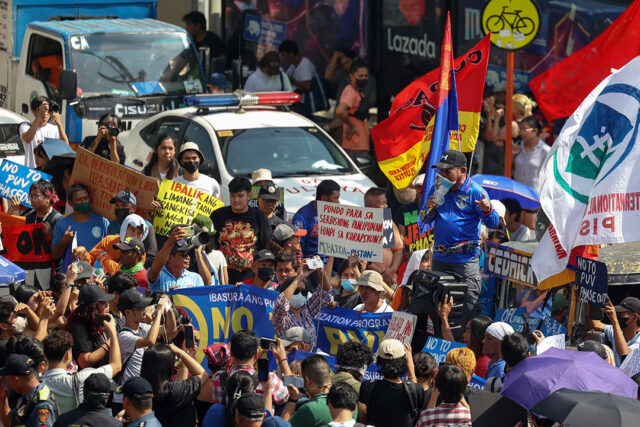
PUBLIC policy think tank, Infrawatch PH, criticized the economic viability of the public utility vehicle modernization program (PUVMP), saying that the resistance from drivers and commuters is a call for the Marcos administration to find inclusive strategies for modernizing transportation.
Infrawatch PH Convenor Terry Ridon, in a statement on Wednesday, said fare hikes resulting from the modernization program could go up by 300%, citing a University of the Philippines study.
“This isn’t just about the transport sector; it’s about every commuter who relies on jeepneys for their daily commute,” Mr. Ridon said. “In the long run, the road the PUV Modernization Program is taking may take our economy into a deeper dive.”
The group argued that the PUVMP could negatively impact the economy, placing a financial burden on jeepney operators. This is due to government subsidies, which only range from P160,000 to P360,000, for modern jeepneys valued between P1.3 million and P2.6 million.
“These costs are not just numbers; they represent the livelihoods of thousands. We cannot allow the modernization program to proceed at the expense of our jeepney drivers,” Mr. Ridon noted.
Mr. Ridon said instead of providing loans and subsidies for drivers and operators for availing modern jeepneys, the government should focus on rehabilitating their current units. Alternative modernization strategies such as allocating funds for terminal improvements and dispatch systems should also be considered.
The group also urged the Land Transportation Franchising and Regulatory Board (LTFRB) and the Department of Transportation (DoTr) to take immediate action by implementing policies that consider the well-being of drivers, operators, and commuters.
But DoTr Secretary Jaime J. Bautista made it clear that the consolidation of jeepney operators and drivers into cooperatives or corporations is “non-negotiable.”
“One very important issue that is non-negotiable is industry consolidation because we really need the players to consolidate into cooperatives or corporation,” Mr. Bautista told reporters on the sidelines of a forum on Wednesday, the third and last day of the strike waged by transport group, Pinagkaisang Samahan ng mga Tsuper at Operators Nationwide (PISTON).
PISTON waged the strike to call for the suspension of the PUVMP, which effectively phases out traditional jeepneys in favor of new generation transport vehicles by the end of the year.
As to their demand for extension on the validity of PUV franchises to up to five years, Mr. Bautista said the LTFRB has already set the guidelines for franchise extension.
Last Monday when PISTON and LTFRB leaders met, the LTFRB said it is open to discuss the request to extend the validity of jeepney franchise to five years on the condition that operators consolidate into a cooperative in compliance with the PUVMP.
“I said we cannot allow their request not to consolidate as it is a very important component of the PUVMP,” Mr. Bautista reiterated.
Also on Wednesday, separate transport group Manibela started its own three-day strike against the PUV modernization policies.
Infrawatch PH opposed the franchise consolidation and the given deadline, highlighting its potential to jeopardize the livelihoods of small-scale operators.
Mr. Ridon said the protests should be viewed by the government not as a disturbance but as a strong appeal for the Marcos administration to address issues comprehensively, for the benefit of all parties involved.
Meanwhile, amid the ongoing strikes, the Metropolitan Manila Development Authority (MMDA) announced on Wednesday the implementation of “stop-and-go scheme” in key areas along EDSA, Diokno Boulevard, Macapagal Boulevard, Roxas Boulevard, and Atang Dela Rama from Thursday to Sunday (Nov. 23-26) at an intermittent schedule for the 31st Annual Meeting of Asia-Pacific Parliamentary Forum.
A total of 361 personnel will be deployed in affected areas to manage traffic and guide motorists. — Jomel R. Paguian and Ashley Erika O. Jose
Vote transmission revamped

THERE will be no more transparency servers in the 2025 midterm elections due to an enhanced vote transmission process, which Commission on Elections (Comelec) Chairman George M. Garcia explained on Wednesday would send election results (ERs) simultaneously to telecom companies, canvassing boards, poll watchdogs, and media.
“The VCM (vote-counting machine) results will be sent to all [servers] simultaneously. Meaning, you will hear no transparency server,” said Mr. Garcia in Filipino.
This changes the old system of transmission of votes in which ERs from municipal, provincial, and national canvassing centers pass through different servers including central, transparency, backup, and media servers.
In an interview, Mr. Garcia said the new process eliminates the idea that ERs can be manipulated during server transmissions as alleged by some in the 2022 elections.
“We are learning from our experience and from the concerns of certain sectors of our society,” he said, pertaining to the group of petitioners led by former information and communications technology chief Eliseo M. Rio, Jr. who claimed that a “man-in-the-middle” server was used to manipulate results of the 2022 national elections.
“Again I can guarantee you, there was no man in the middle in the 2022 national elections,” the chairman added.
Asked if the new system reduces the chances of allegations of cheating the polls, Mr. Garcia said: “There will always be allegations of rigging especially from the losing party.”
Regarding the issue of whether voting technology provider Smartmatic, implicated in rigging allegations in the 2022 national elections, will be allowed to bid for the next automated elections, he said the Comelec is expected to decide on the petition within the week.
“There was a very extensive discussion early this morning in our executive session because we have to come up with a decision as soon as possible because we have to start the procurement process [of voting machines] soon,” he said in an interview.
The chairman also explained that the winning bidder for automated voting paraphernalia will also have to provide other collateral materials including the ballot and ballot boxes to be used, aside from the machines and software. — Jomel R. Paguian
69 firms, officers face tax evasion
THE BUREAU of Internal Revenue (BIR) has filed criminal cases against buyers and sellers of so-called “ghost” receipts that have cost the government tax losses worth P1.8 billion.
The agency said it filed 15 criminal cases before the Department of Justice on Wednesday. The cases involved a total of 69 corporations, corporate officers, and accountants.
“The sale and use of ghost receipts is a tax-evasion scheme of the highest order. The BIR is committed to filing civil and criminal charges against all corporations, corporate officers, and accountants involved in this syndicate. We are already preparing the next set of criminal cases,” BIR Commissioner Romeo D. Lumagui, Jr. said in a statement.
The BIR said that the buyers and sellers of fake receipts range from various industries such as construction and hardware, marketing of goods, equipment, office supplies, automotive oils, trading of metals, contractor electrical and mechanical systems, hotel, and food services. — Luisa Maria Jacinta C. Jocson
Railway study eyes 2024 approval
THE PHILIPPINE National Railways (PNR) North-Long Haul Inter-Regional Railway project’s feasibility study is set for completion by March next year, aligning with National Economic and Development Authority (NEDA) approval timelines that could fast-track its realization.
“Based on our timeline, we are targeting to end the pre-feasibility study by this year or January next year,” Manuel Francisco Bretaña, project development officer of the Department of Transportation (DoTr), told Wednesday’s hearing of the House Committee on the North Luzon Growth Quadrangle.
Mr. Bretaña voiced out considerations for new railway alignments due to the limitations of the old PNR north railways for high-speed rails. The planning committee is exploring various land assets for right-of-way, emphasizing the need to accommodate the larger turning radius of high-speed rails, which the old PNR alignment may not support.
The North-Long Haul is an 800-kilometer inter-regional railway project that will connect the capital region to the northern reaches of Luzon.
Since it would connect the regions of Ilocos, Cagayan Valley, and Central Luzon, the railway project is also expected to link the Clark Freeport Zone, Poro Point, Laoag International Airport, Port Irene, and the La-lo Airport.
The railway will also be part of the Luzon Railway Network, the Subic-Clark Railway, and the South Long Haul.
The project is expected to reduce travel time and road congestion, as well as increase access to international ports, airports, and agricultural markets. — Beatriz Marie D. Cruz









